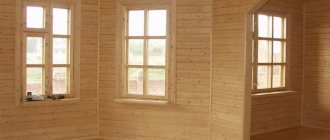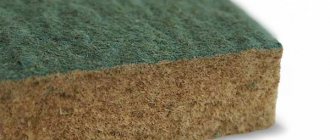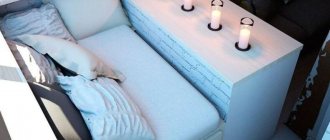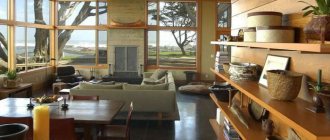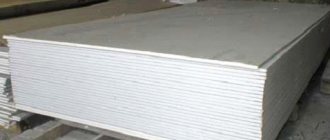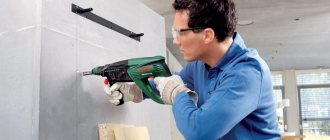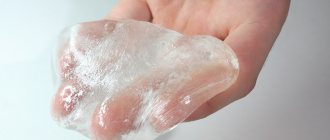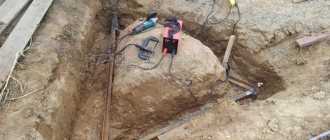by Alexey | Decor Tips Workshop Interior | Wednesday, November 10, 2021
| Follow Make-Self.net on Facebook and be the first to read our articles. |
Drywall, mostly composed of paper and gypsum, is cheap to make and buy, so you can cover large areas for little money. Since drywall is dense, it perfectly absorbs sound. But drywall is not the only material for wall finishing. Despite the many benefits of drywall, there are reasons why you might want a different type of wall covering.
Alternative to drywall: modern options
Drywall is considered by many to be the best way to level walls in a room. And for these types of work, as well as when constructing partitions, we first of all think about this composite. In fact, despite all the advantages of gypsum board, such an approach may be a little old-fashioned. And today we will talk about the main finishing materials that can be used as an alternative to plasterboard sheets. But, first, we want to tell you about the advantages of drywall, which made it so attractive.
GVL
Gypsum fiber sheet is very similar to plasterboard sheet both in its appearance and the raw materials from which it is produced. At the same time, GVL has a couple of advantages, namely higher ones:
- thermal insulation performance;
- soundproofing properties.
GVL plasterboard is also inferior in its fire resistance characteristics. However, GVL are not flexible enough to make the same interior arches from them.
What allowed GKL to take the top of the market
- Plasterboard sheets are quite easy to install. Even a beginner can cope with the construction of a metal or wooden frame. In this case, for work you only need a knife and a screwdriver;
- Affordable price. Of course, KGL models with water protection and fireproof options are more expensive, but in general the cost of such sheets is very low. Many of the materials used in similar work are much more expensive;
- Drywall is durable. If used correctly, a partition created on the basis of gypsum plasterboard will last an extremely long time;
- Simple further finishing. Drywall sheets, due to their excellent adhesion, interact well with other finishing materials;
- Versatility. This composite material can be used for a variety of areas, from leveling walls and constructing partitions to constructing various structures;
- Absolutely environmentally friendly. The composition of plasterboard includes only gypsum and thick paper. There are no chemical compounds that could harm humans here.
Installation methods
When installing construction and finishing sheets, they adhere to the requirements of the technology they chose. There are 4 ways to attach drywall to a ceiling without a frame. The choice of method often depends on the characteristics of the base, the size of the room and the qualifications of the performer.
For mastic
The technology involves gluing gypsum boards to the ceiling using a special compound. Installation does not require lathing, so the procedure is much faster than with the frame method. The only requirement is to carefully prepare the work surface.
The mortar for gypsum plasterboard consists of paste, lime and alabaster. Sometimes on sale you can find substances based on slow-drying putty and PVA. Homemade options are created from:
- swollen bone glue;
- gypsum;
- clean liquid.
Pour the dry ingredients into a container, add cold water and stir thoroughly, removing air bubbles. The finished mass should resemble plaster in consistency. The mastic is applied along the perimeter of the drywall in a wide strip (10 cm). Large portions are placed in the center of the sheet, leaving a space of 30 cm between them.
In what situations may it be necessary to replace the material?
It would seem that drywall can rightfully be called the real “king of finishing works.” However, sometimes it needs to be replaced. First of all, the disadvantage is the inability to use sheets for fastening heavy elements without special anchor structures. The second factor is the reduction in the area of the room when finishing it with gypsum board. And finally, we often don’t want to spend a lot of resources on finishing, and these sheets require further finishing in almost all cases. Of course, not all of the options described below solve these problems, but we will mention them anyway.
Cement board
Cement board is resistant to mold and rot where excess moisture is a problem. It's easy to install, and since the board is factory dried, there's much less mess than drywall.
However, cement board can be bulky and heavy, so installation is usually a two-person job . Most often, cement board is used as a base for tiling, but it can also be used in its raw form to create a minimalist, industrial look.
Description of the main analogues of gypsum boards
Stretch ceiling
GCRs are often used in ceiling decoration, especially for building multi-level options. However, stretch ceilings are now much more attractive. The implementation of this method involves stretching a special polymer fabric, the appearance of which can be very diverse, ranging from monochromatic options to various patterns and imitations of surfaces.
On the side of suspended ceilings are extremely quick installation and excellent visual characteristics. Moreover, if at the very beginning of their appearance on the market such ceilings were not available to everyone, then over time the situation has changed and now the prices are very attractive.
Plywood
The simplest option for replacing gypsum boards, which compares favorably with the latter in its cost. Unfortunately, this is where the advantages end, and a very impressive list of disadvantages begins:
- Plywood is more difficult to work with and the material is not very flexible;
- High degree of flammability (plasterboard can also burn, but there are fire-resistant options);
- Low adhesion, which makes further finishing without the use of primers very difficult;
- Plywood is afraid of moisture (like regular gypsum boards. Fortunately, there are moisture-resistant options that can even be used to decorate a bathroom).
OSB boards
Oriented strand board, true to its name, consists of wood chips positioned at different angles and glued together into a single mass. This arrangement of components gives the material the highest strength. Moreover, this material is superior to drywall in resistance to moisture. Not to mention that OSB has a lower weight with a fairly high density.
At the same time, this material contains formaldehyde, which is a carcinogen, which makes it no longer a competitor to environmentally friendly drywall. Finally, OSB cannot be bent, and the flammability of the material is very high. Processing oriented strand boards is also a very difficult process. Finally, the cost of finishing with their help is higher than when using gypsum plasterboard.
Its characteristics are very similar to the option described above. So all the advantages that OSB has over plasterboard are also characteristic of chipboard. As are the disadvantages. However, unlike oriented strand boards, chipboard is more susceptible to moisture, since it does not contain wax impregnation. Moreover, in this parameter the material is inferior not only to its “relative”, but even to drywall.
The positive aspects include simple installation, as well as a lower price than gypsum plasterboards.
PVC panels
Created on the basis of polymer materials, these panels can imitate a large number of surfaces. And if the gypsum board needs finishing work, then you can stop at installing polyvinyl chloride panels, since their visual characteristics are extremely high. Their other advantages include the highest durability and the ability to withstand moisture. Just as plastic bottles and bags will survive all the garbage, PVC finishing on the walls will allow the latter to remain attractive at a time when other surfaces are in need of repair. In addition, these properties allow the material to be used as exterior finishing, where drywall cannot be used.
The disadvantage is that the material, although durable, is not at all indestructible. And in case of mechanical damage, repair is almost impossible and the entire panel will have to be replaced. If we add to this the lack of environmental friendliness and a fairly high fire hazard, then the advantages of PVC panels over plasterboard no longer seem so significant.
Tongue-and-groove slab
In many ways they are similar to gypsum boards, since they are also made of gypsum. The panels are an excellent means of constructing partitions in the shortest possible time. Grooves and ridges reliably connect the elements to each other, and even the most inexperienced person can handle the process. The disadvantage is the susceptibility to rapid wetting and destruction under the influence of moisture, as well as the inability to be flexible. But in general, this material can be considered one of the best substitutes for drywall.
Gypsum fiber sheets, as the name implies, are created on the basis of gypsum and fibers, which are cellulose components. The latter act as reinforcement, thus increasing the strength of the material. On the one hand, gypsum plasterboards are coated with a hydrophobic composition, as well as a priming component, which provides better adhesion and, as follows from this, easier further finishing.
This material has better thermal insulation than drywall and also conducts less sound. But the advantage of gypsum board in flexibility still exists in this case.
A technological finishing material called glass-magnesium (or glass-magnesite) sheets can be considered one of the best alternatives to gypsum plasterboard. The material contains fine sawdust, minerals, fiberglass and expanded perlite. All this makes it possible to create a material that is stronger and more durable than drywall, has better heat and sound insulation and moisture resistance. Don't forget about the lighter weight.
Which is better: heated floors or radiators?
Warm floorBatteries
What LSU lacks is an affordable price - finishing the room with plasterboard will be much cheaper. Moreover, by choosing the latter correctly and using insulating materials, you can largely compensate for the advantages of LSU.
3D panels
Made from PVC, foam or gypsum, 3D wall panels are available in a variety of shapes and can be painted to match your decor . Often used for accent walls, this material is durable, lightweight, inexpensive and water-resistant.
Foam panels are an excellent solution for home studios as they absorb sound well.
So what to choose
As can be seen from everything described above, plasterboard sheets are extremely attractive in terms of the combination of price, quality and labor costs for installation. Many of the materials presented here have many disadvantages over gypsum boards, so they do not look so advantageous as standard solutions when performing standard work.
Reasons to choose drywall over one of the materials described above may be the following:
- The need for exterior finishing;
- Tough cost savings;
- High humidity;
- Reluctance to carry out further finishing.
Another reason is the desire to try something new, since the popularity of drywall often makes it less interesting for people who love experiments. However, from a practical point of view, it has few competitors, which explains its enormous demand.
OSB sheets
OSB is formed by pressing various wood fibers together using an adhesive. It is mainly used as cladding for external walls or as a floor screed. OSB often has a waxy surface that makes it difficult for paint to adhere, but after priming and painting, the grain of the wood can still show through.
Follow us on Pinterest for more interesting articles.
Useful short videos from Make-Self.net
How to replace drywall - alternative finishing materials
Drywall is widely used for interior cladding. Are there any alternatives to this material today? And how beneficial is their use in terms of quality and ease of installation?
Spectacular finishing with glass-magnesite panels - a worthy replacement for drywall
Options for replacing gypsum boards for interior decoration
Let's consider the question, what can replace drywall?
There are several types of materials that can be used as an alternative to plasterboard sheets.
- Chipboard – chipboard. Suitable for the construction of internal partitions. The products are mounted on a slatted or metal frame; sound insulation material (for example, foam plastic) can be placed inside. For internal partitions, OSB can be used, the advantage of which is its high strength.
You should know! The disadvantage of these materials is the difficulty in preparing the surface for the finishing coating (painting, etc.).
- Stretch ceilings are an excellent alternative to plasterboard. Stretch ceilings are characterized by a high installation speed, look very aesthetically pleasing, their installation is simple, and there is no dirty work in the process. And the price is very reasonable.
- GGP (groove-ridge slabs). These products are also made of plaster. For precise and durable connections with each other, they have special grooves and ridges. PGP are stronger than gypsum boards; they are used in the construction of walls.
- SMG (glass-magnesite boards) is an excellent “substitute for plasterboard and products. They are used for installing internal partitions, for leveling wall surfaces, for cladding ceilings, roofs, attics and attics, for installing suspended ceilings, multi-level floors. They are distinguished by fairly high strength qualities, moisture resistance and fire resistance.
Fake diamond
More economical, lighter and easier to handle than natural stone, artificial stone is a synthetic material that is a replica of real stone. It is less durable than natural, but requires little maintenance and is sold in a variety of styles and colors.
Faux stone is ideal for rustic interiors and is popular around fireplaces or as a kitchen backsplash.
Main characteristics of analogue materials
Tongue-and-groove slabs
PGP is often positioned as the main analogue of gypsum plasterboard due to the fact that they allow minimizing “dirty plastering work. GGP is produced from gypsum with additives: binders and antiseptic components. The slabs are produced both solid and hollow. They are distinguished by high strength and excellent sound insulation qualities, providing an optimal indoor microclimate.
Chipboard and OSB
Features of use! Chipboards are characterized by low moisture resistance, so they are used only in dry rooms. OSB and chipboard are difficult to plaster for subsequent painting.
Glass magnesite sheets
Consist of minerals, fiberglass and fine sawdust.
This is what glass magnesite products look like
- Fire resistance - glass-magnesium sheets are installed in rooms where only non-combustible materials can be used (for example, for finishing emergency exits, etc.).
- Safety - there are no toxic additives, which allows the use of magnesite boards in children's institutions, hospitals, canteens, etc.
- LSU is an excellent replacement for plasterboard; it has high strength qualities and flexibility: thanks to these characteristics, a variety of complex structures can be created from LSU.
Excellent flexibility with high strength properties
- Excellent sound insulation properties provide a wide range of applications for glass-magnesium slabs in the finishing of cinemas and other rooms where it is necessary to isolate loud sounds.
- Excellent moisture resistance allows installation of LSU in rooms with high humidity: bathrooms and even saunas.
- Frost resistance is an important quality. This allows the products to be used in exterior decoration. The material can withstand temperature changes without deforming. Any surfaces can be covered, awnings and canopies can be finished, and a base for a soft roof can be laid.
Important! In the external environment, slight linear expansion of the material is possible. This leads to the appearance of cracks at the joints. There are many methods to combat this phenomenon.
LSU and for external cladding is indispensable
This drywall substitute has a smooth surface on one side and rough on the other. Glass-magnesite sheet does not require preliminary preparation. Any decorative coating can be easily applied to a smooth surface: paint and plaster, tiles and wallpaper.
Important! It is not advisable to paint with waterproof paint (over time, blisters may appear on the surface).
What can be used instead of drywall
If, for the above reasons, drywall is not suitable for you and you need to replace it with some other material, then you should choose from this list:
- Chipboard (chipboard)
- Glass magnesium sheets
- Tongue-and-groove slab
- Cement particle board
- Gypsum fiber sheet
- Oriented Strand Board
- Gypsum particle board
- Stretch fabric for ceilings
- Aquapanel
- PVC panels
- Plywood
Important: the choice of material depends on the location where the installation is taking place. There are some factors to consider:
- Moisture resistance
- Fire resistance
- Ease of working with this material
- Price
Chipboard
Before the advent of plasterboard, chipboard was widely used as a finishing material. Now she has faded into the background.
Most often, chipboard is used to install partitions. A frame made of wood or metal is also used here. Sound insulation is carried out using polystyrene foam or mineral wool in the gap between the real wall and the chipboard wall.
- Strength
- Low price
- Easy to install
But chipboard is difficult to plaster, and wallpaper sticks worse to it. Just like gypsum plasterboard, the moisture resistance of these boards is low, so chipboard is not suitable as an alternative to drywall in the bathroom, on a balcony or loggia.
There are also OSB boards. Essentially, they are higher quality wood chips. They differ from them only in greater strength and longer service life. Disadvantage: require careful surface preparation.
Important! The environmental friendliness of wood boards is lower than that of gypsum boards, and they require additional finishing.
Glass magnesium sheets
One of the most worthy substitutes for gypsum boards is LSU. They consist of fine sawdust, minerals and fiberglass. They can be easily wallpapered, ceramic tiles laid on them, or painted. Therefore, first of all, glass-magnesium sheets are used to replace plasterboard for interior decoration. This is a good alternative to drywall in the bathroom, because LSU is moisture resistant.
Rules for installing glass-magnesium panels
These products do not require special installation and processing skills - all work can be done with your own hands. For these manipulations you will need standard tools:
- knife,
- jigsaw,
- narrow hacksaw,
- plane,
- screwdriver or drill,
- spatulas.
With internal cladding, fastening is carried out on a metal or wooden fastening system, or directly on the enclosing structure. When the installation instructions are strictly followed, you can guarantee that the finish will delight you with its impeccable appearance for many years.
Visual photo of installation work
They are cut with a hand jigsaw, circular saw, polished with a grinding machine, and do not form cracks or chips during processing. During the cutting process, the slabs lie on the floor, cutting is carried out from the glossy side.
Important! In order for the cutting to be done efficiently, you need to use a dry sheet.
Since the panels are produced with cut edges, for their installation it is necessary to remove the chamfer (along the edges of the sheet). A plane is used for this. If necessary, the cut edge is processed with emery cloth.
Installation begins with the installation of the sheathing, which is secured using fasteners and brackets.
Self-tapping screws are used to fasten the panels. The panels are installed in the longitudinal or transverse direction.
Basic fastening rules:
- Horizontal seams should be made in increments of 60 cm.
- At least 10 cm should be left between the bottom edge of the sheet and the floor surface (the distance is subsequently filled with putty).
- The order of fixing the panels is from the center of the slab.
- Fastening is carried out in increments of 20 cm.
- The screw head is recessed into the surface.
- There should be at least 1 cm from the edge to the screw.
- A distance of 3-5 mm is left between the sheets.
Summary: Today, one of the best alternatives to gypsum plasterboards are glass-magnesite panels. You can get acquainted with the options for decorating rooms with their help by watching the visual videos presented on the pages of our website.
- simpler installation that does not require building a frame;
- significantly higher strength;
- possibility of laying wiring and pipes in grooves.
But sometimes there are situations when such a universal and optimal material, due to a number of circumstances, needs to be replaced. It is especially difficult to find an alternative for the bathroom, toilet and for finishing on the balcony. From this article you will learn what can replace drywall and what characteristics the candidates for replacement have. Regarding chipboard (chipboard), we can say that it is more affordable and less moisture resistant than OSB boards due to the lack of wax impregnation. Otherwise, their characteristics regarding drywall are identical.
PVC panels (polyvinyl chloride) in price can be either cheaper or more expensive than gypsum plasterboard, depending on the quality, size of the sheets, and manufacturer. Their disadvantages are: Replaces drywall when constructing partitions. Installation work can be carried out by one person without an assistant. There are 2 types of slabs - hollow and solid.
The former are easier and more convenient to conduct wiring in voids, but they are also more fragile. Fireproof. Installation involves the need for wet processes. Higher pressure on the base due to the large weight of the gypsum board. Magnelite is a new material that has not yet been fully tested by the market; according to its characteristics, it represents the best alternative to drywall.
The surface is reinforced on both sides with fiberglass mesh. It is 2-3 times stronger than gypsum board and bends much easier. The main advantage of OSB board is its high strength and longer service life.
Essentially, this is a higher quality chipboard. The main disadvantage of this material is the need for careful surface preparation for final decorative finishing. The disadvantages of OSB also include low water resistance. Therefore, in the bathroom, loggia and balcony this option is excluded. Situations in which it may be necessary to replace such an excellent finishing material do occur, but are quite rare.
This is primarily due to the fact that drywall has several disadvantages, which sometimes make it impossible to install it indoors. Such situations include:
Which substitute should I choose?
Whenever choosing an analogue of drywall, you need to take into account the place where it will be used. Some materials, as we see, can be successfully used for exterior work, where gypsum boards are almost never used, some can become a replacement for finishing interior walls and ceilings. Before replacing drywall, you need to carefully calculate not only the financial component, but also further operational adaptability. After all, both in terms of labor costs and the price of the material itself, gypsum boards remain uncompetitive. On the other hand, some of the listed materials have properties that can significantly save on the final result.
For example, having a beautiful glossy surface, PVC panels will allow you to save on putty, painting or wallpapering. And this is definitely a plus. But, if you need to make changes to the design of the room, then this quality will become a minus. And even with minor damage, to eliminate it, you will have to dismantle and then reinstall a significant amount of finishing material, and replace the entire panel, the cost of which will increase the already expensive work. Whereas repairing drywall is always very simple and much more affordable. The market does not stand still, new production lines are opening, energy-saving technologies are being applied. All this allows us to develop more and more new materials that can either replace each other or perfectly complement each other.
How to replace drywall: alternative options, their advantages and disadvantages
- glass-magnesite sheet SML;
- aquapanel;
- tongue-and-groove slab PGP;
- plywood;
- chipboard; chipboard;
- oriented strand board OSB (OSB);
- cement bonded particle board;
- gypsum particle board GSP;
- MDF panels;
- PVC panels.
Its properties are similar to chipboard, but much more durable and moisture resistant. Due to the lower percentage of resins compared to particle board, OSB is less hazardous to health. Stronger than plasterboard. Disadvantages - it is afraid of fire, during operation it can delaminate or become deformed. Non-moisture-resistant varieties may cause swelling on the surface upon contact with water, and moisture-resistant varieties contain harmful resins.
Needs careful preparation for finishing. In general, replacing drywall with plywood is one of the most common options. Its great popularity is due to many advantages, including ease of installation, a wide range of possible uses, the ability to create curved structures of the most intricate shapes, ease of laying communications, low price, and environmental friendliness. Despite this, there are situations when, due to various circumstances, it is necessary to abandon it, which raises the question of what alternative to drywall exists. Compared to drywall, the material is more durable.
Due to the presence of cement in the composition, it has good moisture resistance, allowing the CBPB to be used for wet rooms and outdoor work.
Technology earthbreaker
Rammed earth construction uses natural raw materials such as compacted soil and gravel to create walls, floors, and foundations.
This technique, which originated in ancient times, has been modernized through the use of prefabricated panels. These walls are naturally insulating, durable and attractive, especially for green buildings. However, this technology is rare and expensive to implement.
Why drywall is not the best choice for walls: comparing alternatives
A plasterboard sheet is a layer of gypsum wrapped in thick paper, measuring 1200x2500x12.5 mm and weighing 29 kg. It can also be thinner - 9 mm wide, but this option is very fragile. It is mounted as follows: first, a frame is formed from a metal profile, then plasterboard sheets are sewn onto the frame in two layers, overlapping on all sides. The final wall thickness will depend on the width of the metal profile used 50/65/75/100 and will be 100/115/125/150 mm, respectively. GCR is sheathed not only on walls, but also on ceilings.
Dimensions of the gypsum fiber sheet are 2500 x 1200 x 10/12.5 mm, weight 36/42 kg. More often, a thickness of 10 mm is used for interior partitions. The metal frame is sheathed with GVL sheets in one layer, unlike gypsum plasterboard.
To improve sound insulation, you can make two layers, but then it is better to combine: one layer of gypsum fiber board, the other of gypsum plasterboard.
- well processed to create complex shapes: arches, convexities, concavities.
- It is convenient to lay communications inside the frame, which is sheathed with gypsum board.
- Easy installation.
- The wall turns out smooth and does not require additional leveling.
- If you mount the frame on top of the floor screed, the plasterboard wall can be dismantled and rebuilt as needed.
- Very light material, gives very little load on the floors.
It’s rare that a redevelopment can be done without erecting new partitions, unless you decide to make a studio and are just tearing down the old walls. New walls can be built from piece materials, such as brick, slabs and blocks of various compositions - we have already talked about them in the article “From brick to glass blocks: what to build interior partitions from.” Or use sheet materials. There are three most popular today, and we are ready to tell you about all their pros, cons and features so that you can choose the best one. Cost: 450-500 rub./piece.
The final wall is approximately the same in cost for gypsum plasterboard and gypsum board, since gypsum plasterboard is mounted in two layers, and gypsum board in one.
Chipboard
Chipboards can be compared with oriented strand boards, since the technical and operational characteristics of these materials are almost identical. However, chipboard, unlike OSB, does not tolerate moisture and water well and in this way they are similar to drywall.
However, chipboard deserves attention because it is relatively inexpensive. Chipboard can be used to perform rough work.
How to replace drywall: possible options
As you can see, drywall has a fairly small list of shortcomings, consisting of only two points. But this is enough for there to be alternatives on the market that can be used if necessary.
- simpler installation that does not require building a frame;
- significantly higher strength;
- possibility of laying wiring and pipes in grooves.
For ceilings and walls, high-quality plasterboard substitutes can be found relatively easily. The main thing is to know their advantages and disadvantages in order to ultimately get the desired result. Situations in which it may be necessary to replace such an excellent finishing material do occur, but are quite rare. This is primarily due to the fact that drywall has several disadvantages, which sometimes make it impossible to install it indoors.
These situations include: The most acceptable replacement for drywall can be glass-magnesium sheets (GMS), made from magnesium chloride, caustic magnesite, fiberglass and expanded perlite. Although they are more expensive, they have undeniable advantages, such as:
- Plywood is more difficult to work with and the material is not very flexible;
- High degree of flammability (plasterboard can also burn, but there are fire-resistant options);
- Low adhesion, which makes further finishing without the use of primers very difficult;
- Plywood is afraid of moisture (like regular gypsum boards. Fortunately, there are moisture-resistant options that can even be used to decorate a bathroom).
The simplest option for replacing gypsum boards, which compares favorably with the latter in its cost. Unfortunately, this is where the advantages end, and a very impressive list of disadvantages begins: But chipboard is difficult to plaster, and wallpaper sticks worse to it. Just like gypsum plasterboard, the moisture resistance of these boards is low, so chipboard is not suitable as an alternative to drywall in the bathroom, on a balcony or loggia.
Cork
Balsa wood isn't strong enough for all the walls in your home, but it can make a fun accent piece in a home office or children's room. The environmentally friendly material provides warmth and sound insulation , and is also an excellent surface for hanging lightweight artwork, pictures and cards.
Balsa wood is a natural fire-resistant and moisture-resistant material.
How to replace drywall - alternative finishing materials
Features of use! Chipboards are characterized by low moisture resistance, so they are used only in dry rooms. OSB and chipboard are difficult to plaster for subsequent painting.
With internal cladding, fastening is carried out on a metal or wooden fastening system, or directly on the enclosing structure. When the installation instructions are strictly followed, you can guarantee that the finish will delight you with its impeccable appearance for many years. Drywall is widely used for interior cladding of premises. Are there any alternatives to this material today?
And how beneficial is their use in terms of quality and ease of installation? They are cut with a hand jigsaw, circular saw, sanded with a grinding machine, and do not form cracks or chips during processing. During the cutting process, the slabs lie on the floor, cutting is carried out from the glossy side. This drywall substitute has a smooth surface on one side and rough on the other. Glass-magnesite sheet does not require preliminary preparation.
Any decorative coating can be easily applied to a smooth surface: paint and plaster, tiles and wallpaper.
How to treat the surface → Room decoration → How to choose the right paint → Surface treatment technologies → Leveling and finishing the walls → Selecting and applying a primer → Removal from the surface → Stretch ceilings and technologies → Reviews and testimonials
How to prepare the base
Installing drywall on a wall without a frame always begins with preparing the wall itself; the base must be strong, not peel off and have good adhesion. The work is divided into 2 stages.
- Cleaning the walls.
- Impregnation of walls with soil.
How and with what to clean the walls
The gypsum board wall must, first of all, withstand the load; accordingly, it is advisable to completely remove the old, often multi-layer coating.
- Take a hammer or something similar and tap all the planes for voids. Places where voids are identified are knocked down to a solid base.
- If the plaster comes off easily, you can pry it off with a spatula. Problem areas are cleaned with a chisel and hammer.
- Lime or chalk whitewash is soaked with water and removed with a metal spatula.
- Oil-based (alkyd) paint is heated with a hair dryer and removed with a spatula.
- Acrylic paints can only be torn off; for this I use an angle grinder with a cord brush, it is also called a petal attachment, as in the photo below. You can also take a vibrating grinder with grain No. 80 - 100, but here it will take more time.
Installing drywall without a frame requires preliminary cleaning of the base
If cracks are found on the wall, they need to be slightly widened and cleaned with a chisel or grinder, and always to the full depth. And when you prime, these places need to be impregnated especially carefully, because this is where fungal spores settle.
Primer of walls
- After cleaning, the wall needs to be dusted; vacuuming is not necessary, just brush off the dust with a brush.
- The primer is applied with a soft brush, roller or spray gun in 2 layers, without intermediate drying.
- At room temperature, covering walls with plasterboard begins within a day.
- There are now enough types of soil (Betonkontakt, Tiefengrund, etc.), but when choosing, make sure that the composition has deep penetration, plus it contains antiseptics and antifungal additives.
Advice! If you are attaching drywall without a frame to a wooden wall, then a day before priming it is advisable to apply a complex antiseptic impregnation for wood.
Cladding walls with plasterboard without a frame requires a good primer
Important! At the last stage of preparation, cleared cracks and deep potholes need to be filled with putty. For these purposes, it is better to use starting putties; if you want to save money, you can putty with cement-sand mortar or gypsum; the putty areas should be primed again.

